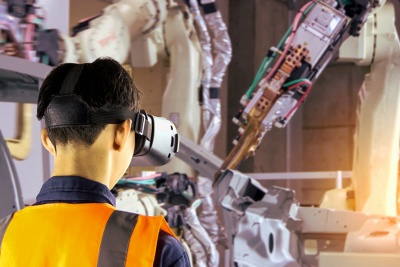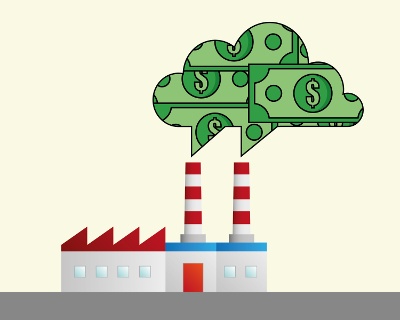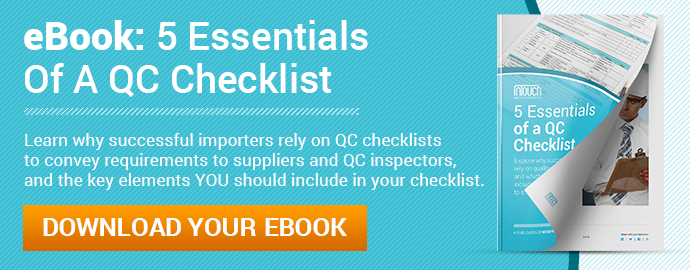Best in Manufacturing – January 28, 2018
Each Sunday, we publish a list of top articles and other content related to manufacturing in areas like quality control, product development, supply chain management, sourcing, auditing and law.
We’re constantly scanning the web for top manufacturing stories and news. If you’d like to submit an article for consideration for our weekly Best in Manufacturing, send us a message and let us know.
1. What the heck are teleoperated robots?
I’ll be honest: when I saw the word “teleoperated”, I had a suspicion that it meant robots operated from a distance. I was right in that they’re operated from afar. But I didn’t know exactly how.
 Users aren’t simply fiddling around with an old fashioned joystick. Teleoperated robots nowadays can be manipulated by sophisticated handheld remote controls that guide a robot in sync with the user’s movements. And so users know what they’re actually doing, they can don virtual or augmented reality technology (like the Oculus Rift) to see what’s happening.
Users aren’t simply fiddling around with an old fashioned joystick. Teleoperated robots nowadays can be manipulated by sophisticated handheld remote controls that guide a robot in sync with the user’s movements. And so users know what they’re actually doing, they can don virtual or augmented reality technology (like the Oculus Rift) to see what’s happening.
Imagine your most senior engineer is miles and miles away from your production facility. You require your engineer to determine if the factory’s equipment is suitable for your newest design. Your designer puts on VR gear, picks up the remote controls and gets to work testing your factory.
This featured article mentions how the Massachusetts Institute of Technology (MIT) developed a prototype system to use VR/AR technology with teleoperations. The system requires several sensors placed around a room so that the system can understand the working environment.
The MIT prototype has two different models: the direct model and the cyber-physical model. The former model essentially allows a user to see through the eyes of a robot. The latter model simulates working within the surrounding environment with a virtual copy of the robot.
Maybe in the future, Google Glass and the Microsoft HoloLens can join in the race next to Occulus Rift to pioneer teleoperation technology and further push the limits of manufacturing.
If you’d like to learn more about teleoperated robots, check out the full article in the link below:
Teleoperated Robots: The Industrial Future Using AR and VR – Greg Conrad, Robotiq
2. Social compliance issues persist in Apple’s Chinese supply chain
Apple has stepped up its social compliance game considerably in recent years, following shocking allegations of poor working conditions at its suppliers in 2010. Apple developed specific standards and started auditing the hundreds of suppliers in its supply chain, conducting a record 705 audits in 2016. But a new report shows Apple’s work is still not done in managing supplier compliance.
China Labor Watch recently investigated Apple supplier Catcher Technology Co. in Suqian, Jiangsu province. The report claims that Catcher’s facilities violated 14 of Apple’s supplier-responsibility standards, some of which include:
- Failure to provide necessary and sufficient safety gear, including goggles, earplugs, gloves and masks to protect workers from noisy machines that spray metallic particles or coolant
- Withheld wages when employees quit, with hiring agencies sometimes threatening to withhold full salaries if workers quit
- Insufficient training for new workers, with only four hours of training for new employees, which is well below the factory’s required 24 hours
The challenges for importers managing social compliance in China
Apple’s spokeswoman commented to Bloomberg on the allegations, saying:
We know our work is never done and we investigate each and every allegation that’s made. We remain dedicated to doing all we can to protect the workers in our supply chain.
It’s true your work is never done in managing supplier compliance as a manufacturer importing from China or other developing countries in Asia. If you’re just beginning to manage supplier compliance, social compliance audits can be a good place to start to avoid disasters.
In response to the report, Apple’s auditors interviewed 150 people and found no evidence of violations of its standards. But factory management often coaches workers on how to answer questions during worker interviews and sometimes even offer them bonuses, making it difficult to know what conditions are actually like.
Conditions also change rapidly in Chinese factories, making a consistent social compliance audit strategy necessary. For instance, Catcher’s facilities have rapid worker turnover, as most of the workers are migrants from rural areas who travel to the coast for peak seasons.
Interested in learning more about common social compliance issues in Chinese factories? Follow the link below to hear directly from Catcher’s factory workers on the conditions they must withstand to make a living:
Apple Supplier Workers Describe Noxious Hazards at China Factory - Yuan Gao and Alex Webb, Bloomberg News
3. Updated Chinese environmental taxes that affect manufacturing
Manufacturing sector pollution in China is under increased scrutiny, which threatens to disrupt the operations of some importers working with Chinese suppliers. Beijing implemented a revised policy to combat pollution in China on January 1, 2018 in the form of a tax. The tax is called the “Environmental Protection Tax”.
 Pollution is a serious threat to China. Climate change (as a result of pollution), might cost Chinese manufacturing $47 billion USD in losses. And that’s not even acknowledging the other effects that climate change and pollution might have on society at large.
Pollution is a serious threat to China. Climate change (as a result of pollution), might cost Chinese manufacturing $47 billion USD in losses. And that’s not even acknowledging the other effects that climate change and pollution might have on society at large.
In an effort to combat environmental degradation, the new tax takes aim at water pollution, air pollution, noise pollution and solid wastes. These categories were covered under the formerly used pollutant discharge fee, which governed how manufacturers paid for pollution.
Here are some key takeaways about the new tax:
- Local authorities have more power to enforce the tax and collect 100 percent of the tax revenue
- Tax rates are different for heavy and light polluters
- Not paying the tax can result in criminal penalties and/or paying five times the tax amount as a penalty
Chinese suppliers that don’t pay attention to this updated regulation might be fine for now. But sooner or later, it might catch up to them and wreak unexpected havoc on your supply chain.
This featured article also mentions how provinces are responsible for determining the tax rate. Some manufacturing hubs, like Guangdong, might keep their tax rates low to retain production facilities there. Other provinces might not worry about scaring away their manufacturing base and take a sterner stance toward environmental contamination by setting the rate higher.
On top of legislative remedies to pollution, developments like superbacteria capable of eating pollution (see #4) will hopefully address China’s environmental concerns. Are there any interesting technologies you think will help reduce the effects of pollution? Let us know in the comments section below!
If you’d like to read more about the updated tax on pollution in China and how it might affect Chinese manufacturers, read the article in the link below:
Environmental Protection Tax in China – Editorial Staff, China Briefing
4. Questions for selecting a manufacturing partner
Choosing whom to trust for your manufacturing operations is one of the most important decisions you can make. It’s an investment of time, money and effort that might make or break your business, depending on the size of your company.
The advice for selecting an appropriate manufacturing partner is mixed. You’ll hear a variety of opinions. Engineers might focus more on technical and design aspects. CEOs might focus more on costs and ROI. Logisticians might focus more on proximity to ports, major highways and rail lines.
It’s ultimately up to you to decide which supplier and advice is best for your needs. Balancing the considerations of the aforementioned roles, in addition to the questions below mentioned by the featured article, might lead you to success.
- Are they capable of doing what I need? The factory is maybe flashy and modern…but at the end of the day, can it actually produce the product you want, and does it have experience doing so?
- Are there cultural differences I should be aware of? People are people everywhere. We all need to eat, sleep, drink and so on. But mankind is full of different cultures, each of which compel people to analyze and approach problems and solutions differently. Recognizing these differences will help with your success.
- What role can I play to enhance this partnership? Ask yourself how you want to facilitate a better relationship with your supplier. Are you going to treat them like a disposable contract manufacturer or a respectable business with whom you can work with for mutual success?
In addition to these questions, it’s important to ask your supplier how they plan to manage product quality and establish appropriate, agreed upon standards (e.g., with something like a QC checklist). When everyone’s expectations are aligned and the deliverables clearly defined, there’s less potential for frustration later.
If you’d like to learn more about picking a manufacturing partner, check out the featured article in the link below:
Choosing the Best Manufacturing Partner for Your Business – Paul Robertson, Manufacturing.net
5. Upgrading or modernizing: what’s the difference in manufacturing?
Precise language helps people avoid undesirable results.
For example, in manufacturing, if you say “give me a blue valve that’s as wide as my arm”, you’re bound to run into trouble. What pantone color of blue? How wide is your arm? What’s the finish of the valve? These questions could continue ad nauseam because a specification, or something like a QC checklist, hasn’t been provided.
And as this featured article makes clear, when it comes to factory improvements, it’s important to use precise language too.
Modernization and upgrading your manufacturing aren’t the same. They differ in terms of their scale and how much investment is necessary. Specifically, the author mentions that upgrading focuses on one specific machine or production line. Modernization, by contrast, completely revamps an entire production process.
The author provides a few questions to answer to help you determine if you should upgrade or modernize, including:
- Are you having trouble meeting consumer demand?
- Is a reduction in operating costs or downtime necessary? Is productivity sufficient or does it need to increase?
- In your production line, is there one specific area where you’re encountering failures/delays?
- And more!
This article provides more questions in its useful modernization vs. upgrade checklist. See the checklist and how to justify the cost of modernization by reading the full article in the link below:
Modernization vs. Upgrade: Which One is Best for You? – Carlos Gonzalez, Machine Design
We’re constantly scanning the web for top manufacturing stories and news. If you’d like to submit an article for consideration for our weekly Best in Manufacturing, send us a message and let us know.







